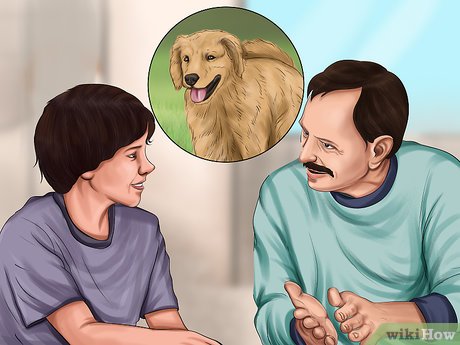In the delicate tapestry of family life, pets often play a vital role, embodying companionship, joy, and an unspoken bond that enriches our everyday existence. However, when neglect darkens this relationship, the consequences can be dire, not just for the animals, but for the emotional fabric of the household itself. Describe the scene of a loved pet gazing out with yearning eyes, a silent plea all too often overlooked. Those who witness this unfortunate reality face the moral and ethical conundrum of what actions to take when their parents neglect their pets.
Recognizing the Signs of Neglect
The first step in addressing the issue is to articulate what constitutes neglect. Just as a plant wilting from lack of water sends an unmistakable signal of distress, so too do pets exhibit signs of neglect. Weight gain or loss, unkempt fur, or lethargy can be indicators that something is amiss. Behavioral changes—such as increased aggression, hiding, or destructive tendencies—can also suggest a pet is suffering in silence. Understanding these signs is akin to decoding a language spoken not in words but through actions and physical condition.
Understanding the Gravity of the Situation
When one ascends from merely acknowledging neglect to grasping its implications, the landscape becomes more grave. Animal neglect can lead to physical ailments, psychological disturbances, and a plethora of behavioral issues that often spiral out of control. Animals, much like children, rely on their guardians for sustenance, health, and love. Failing to provide these essential needs is tantamount to isolating them in an emotional prison, creating an atmosphere ripe for anxiety and despair.
Engaging in Dialogue
Once you have identified the signs of neglect and understood its implications, it is pivotal to engage your parents in a compassionate discussion. Dialogue should not take the form of an accusatory barrage but rather as a genuine inquiry into their perspectives on pet care. Approach the conversation with an open heart, and choose a moment when emotions are calm. Phrasing your concerns in the context of love for the pets can foster understanding rather than defensiveness. One might ask, “Have you noticed how [Pet’s Name] seems to be acting differently lately? I’m worried about them.” This technique cultivates an atmosphere conducive to reflection and dialogue.
Offering Solutions
Merely pointing out neglect may not be enough to incite change. After presenting your concerns, augment the conversation with solutions. Creating a structured care routine can serve as a beacon of hope. Propose a plan that includes walking the dog, grooming the cat, or simply dedicating some time each day to engage with the pets. Suggest splitting responsibilities among family members to lighten the load and foster a collective sense of responsibility. The endeavors should aim to cultivate a nurturing sanctuary where pets are loved and cared for rather than simply overlooked.
Involving External Help
When internal conversations yield little to no change, one might need to consider external interventions. This could range from seeking advice from a local animal shelter to involving animal welfare organizations. These entities often have valuable resources, such as educational programs designed to enlighten caregivers on responsible pet ownership. Engaging them tactfully ensures that you are not coming off as confrontational, but rather as a collaborative ally seeking to improve the quality of life for the animals involved.
Creating Awareness
The path to navigate this tumultuous situation is fraught with emotional challenges, but consider how you might elevate awareness beyond your immediate circle. Many communities host programs aimed at educating pet owners on proper pet care and responsibility. Volunteering to assist in these initiatives demonstrates a commitment to animal welfare, serving as a catalyst for change that might ripple through your family. Use social media platforms to join discussions, share resources, or connect with like-minded advocates. Your passion can spark a contagious enthusiasm for compassionate care, igniting positive changes that will elevate not just your pets, but those belonging to your neighbors.
Empathy and Patience
It is paramount to remember that change rarely occurs instantaneously. Your parents may have embedded habits or beliefs regarding pet care that are not easily dismantled. Patience must be woven into your strategy as you continue to advocate for the pets’ well-being. Sometimes, it requires reiteration and gradual evolution of conversations before genuine concern translates into behavioral changes.
Understanding the Line Between Love and Control
Throughout this process, it is crucial to come to terms with the distinction between nurturing empathy and exerting controlling behavior. While the intention to advocate for helpless animals is noble, it is vital to respect the autonomy of your parents as well. Ultimately, the objective is to foster an environment of mutual compassion—one where the love for pets inspires better practices and enhanced lifestyles for the entire family.
In summation, tackling the complexities of pet neglect within one’s family can be an arduous journey laden with emotional nuances. But advocacy begins with awareness, dialogue, and a steadfast commitment to create a nurturing environment for animals that depend on us. This process may not only transform the lives of the pets involved but also reinforce the bonds of empathy and understanding within the family unit, forging a path toward a more humane society.








